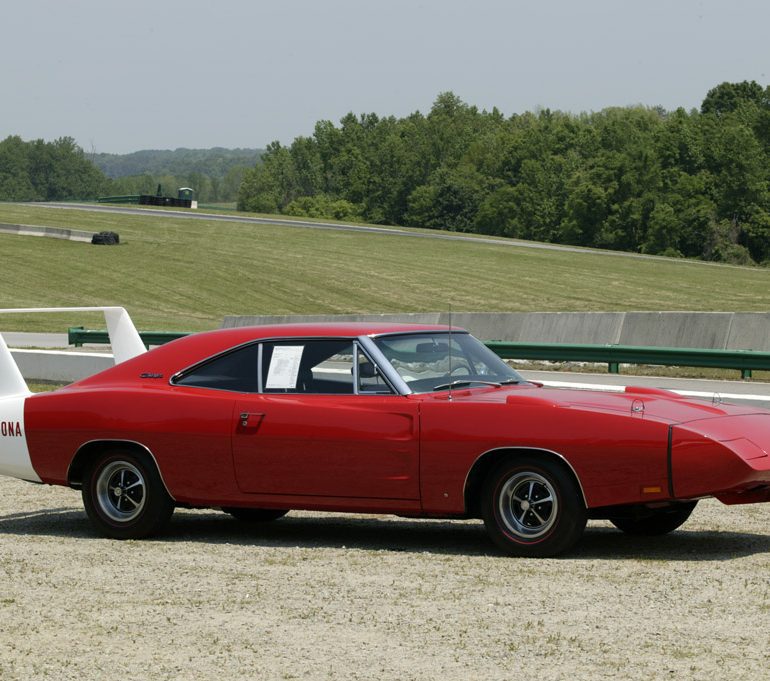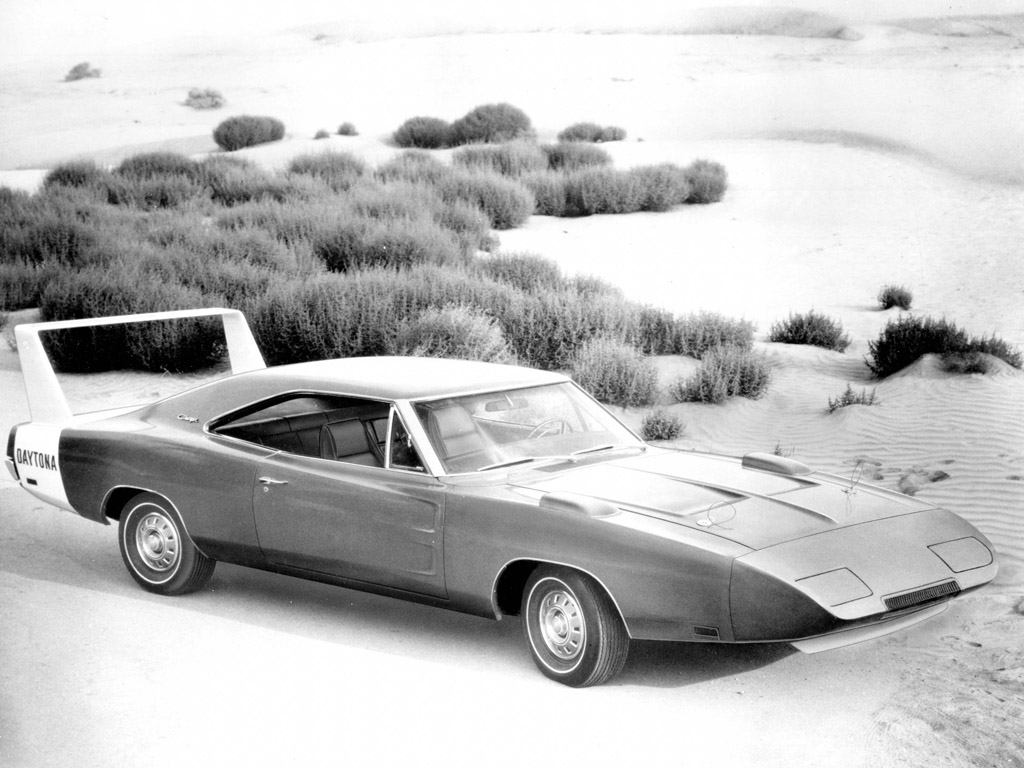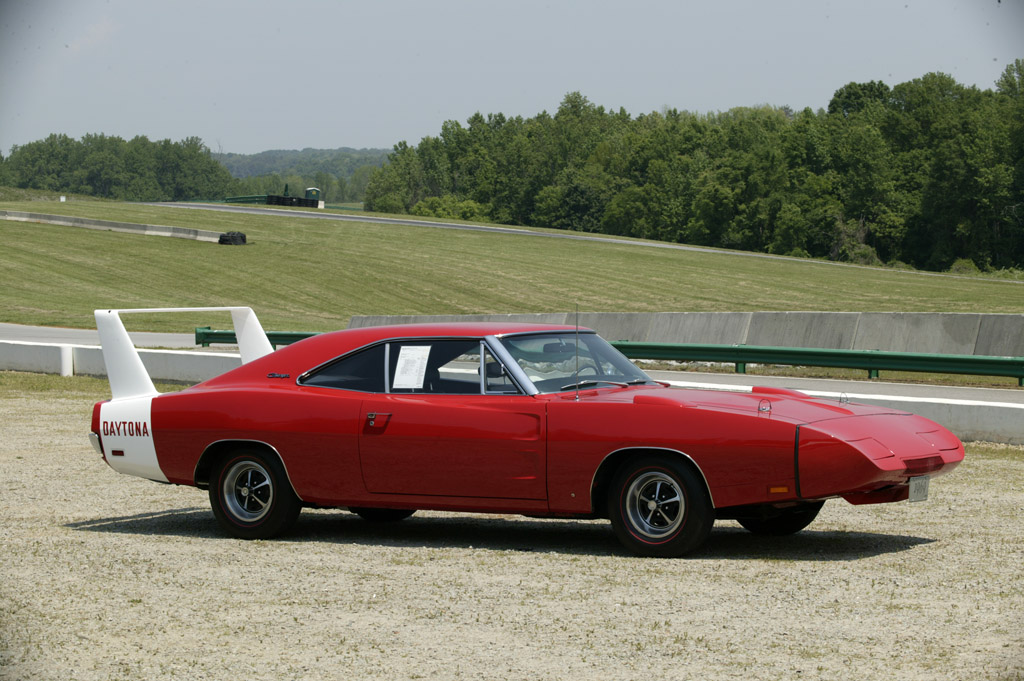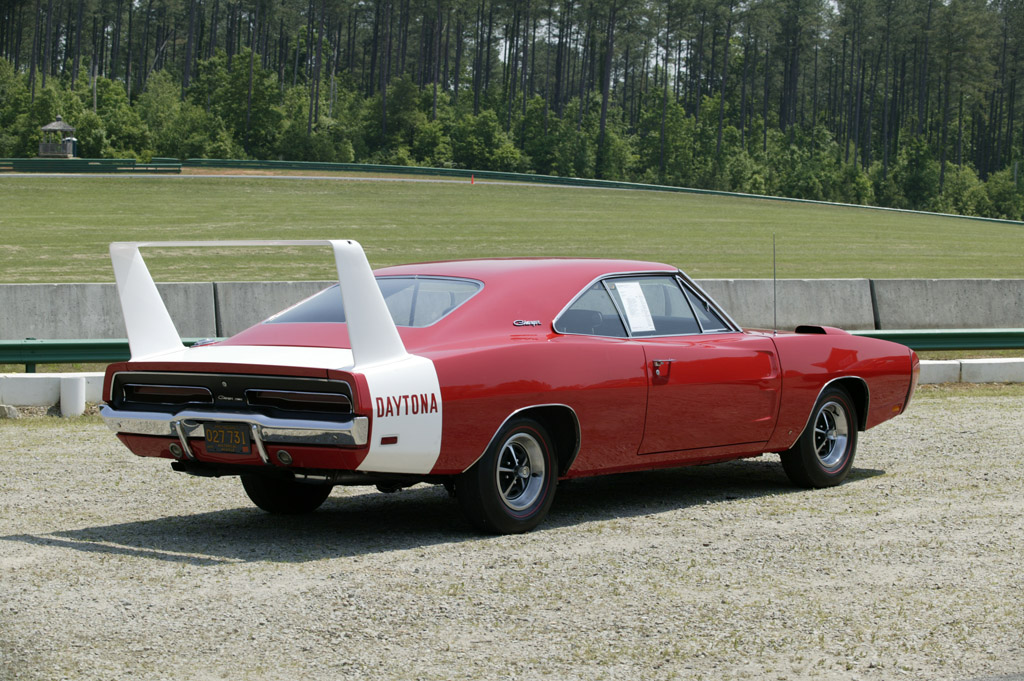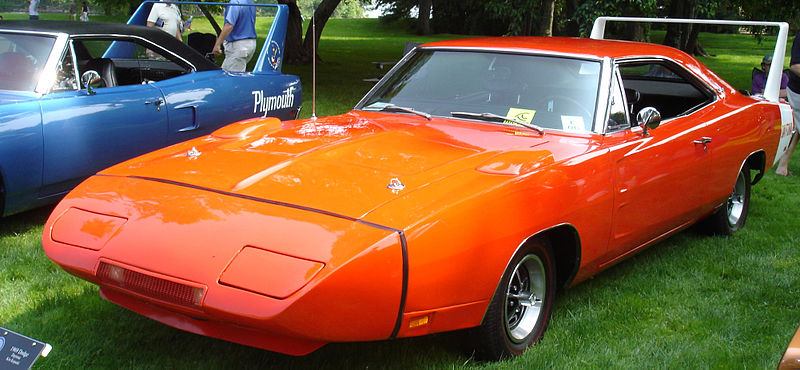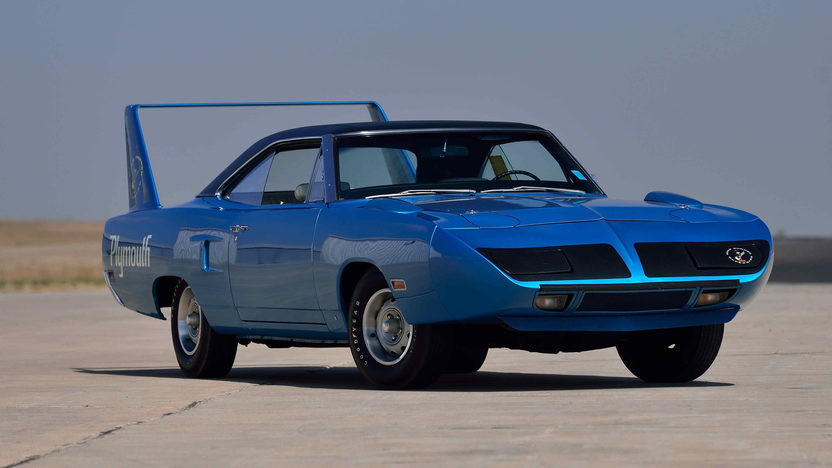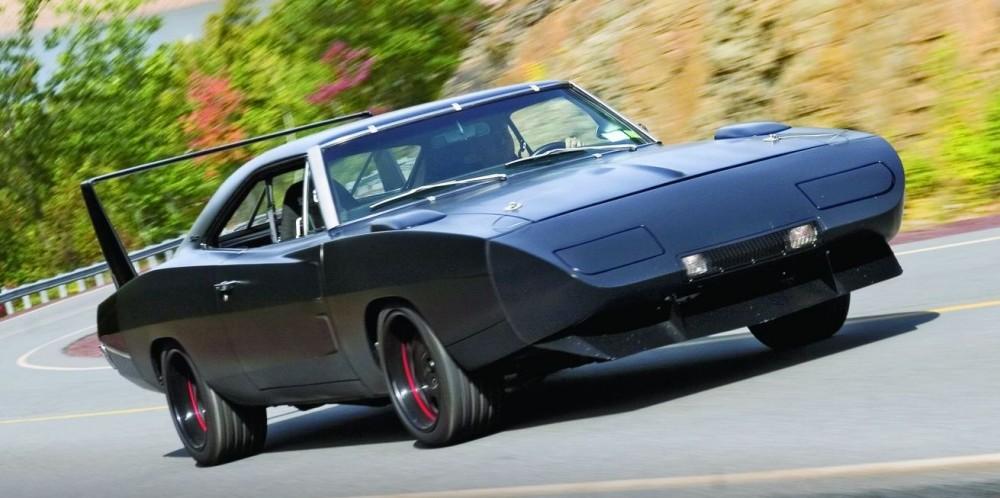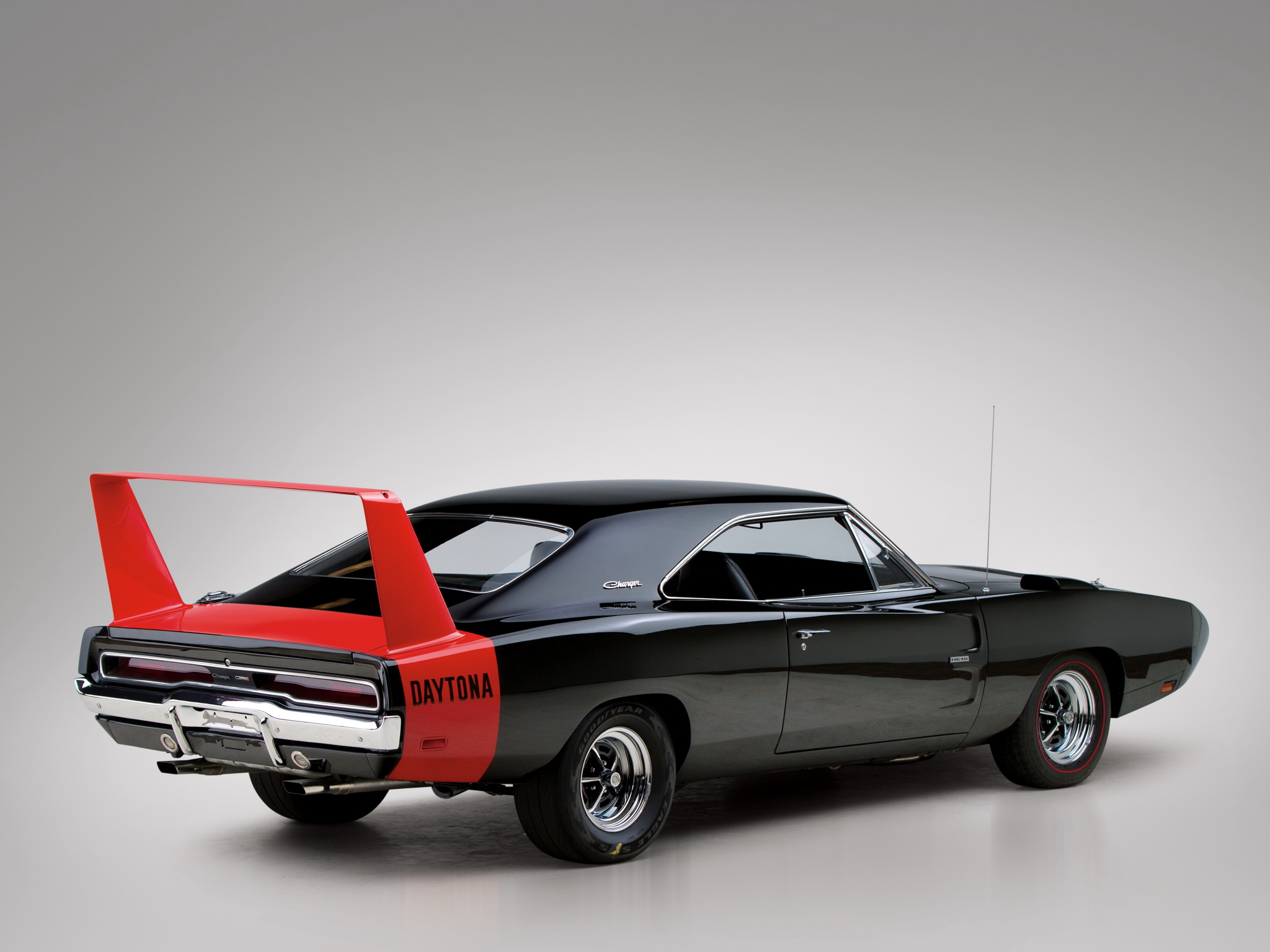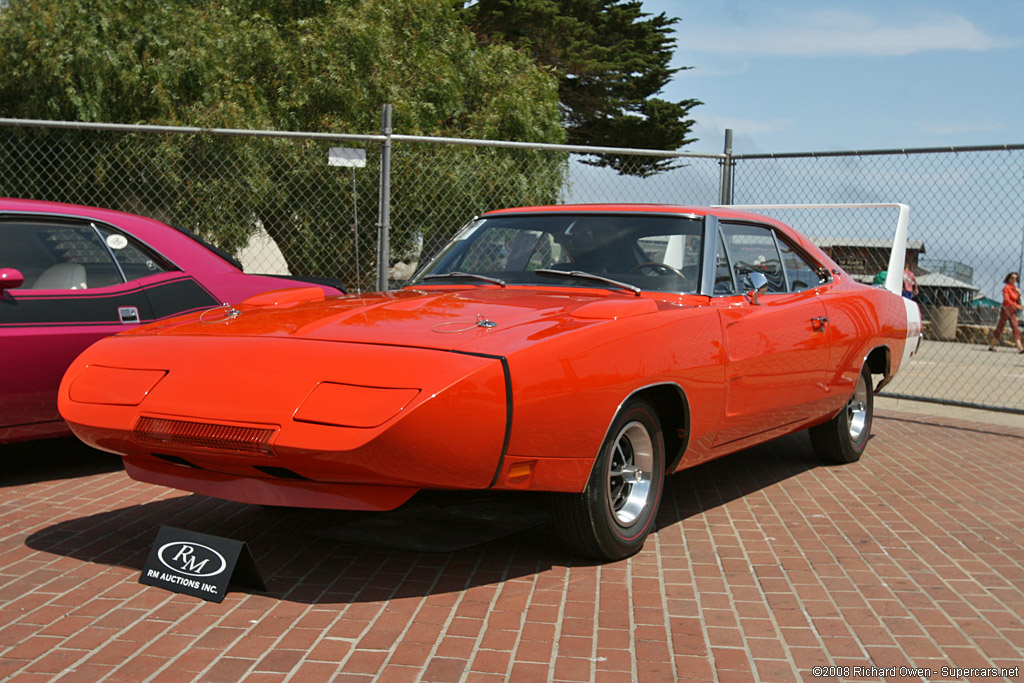1969 Dodge Charger Daytona
Only 505 units were built of the Dodge Charger Daytona for model year 1969 – it was the most conspicuously styled Dodge of all times and served as homologation model for the Dodge stock cars entered in NASCAR races; it was available at a price of 3,860 US dollars. The road-going version of the model was powered by the Hemi 426 (seven liters) with 425 hp or a slightly more sedate 375 hp 440; the tuned racing version reached speeds in excess of 200 mph (over 320 km/h) on oval racetracks.
Called one of the “Winged Warriors”, a list that included Plymouth Superbird, Ford Torino Talladega, and Mercury Cyclone Spoiler II, the Daytona was powered by the Hemi 426 (seven liters) with 425 hp or a 375 hp 440. It should be noted that the tuned racing version reached speeds in excess of 200 mph (over 320 km/h) on oval racetracks. Named after Daytona, Beach, Florida – a center for auto racing in the ’50s. The Daytona 500 is regarded as the most important and prestigious race on the NASCAR calendar, carrying by far the largest purse.
Intended to be a high-performance, limited-edition version of the Dodge Charger (only 505 were built with either a 440 Magnum or 426 Hemi engine), this generation of muscle-cars were produced in the summer of 1969. Unable to compete successfully on the highbanks of the superspeedways which have tracks of a mile or more in length, the Daytona notched just 6 wins in the years 1969 and 1970. Those wins pale in comparison to the more successful results by the 1970 Plymouth Superbird, 1969 Ford Torino Talladega, and the 1969 Mercury Cyclone Spoiler II. However, in terms of speed, a Daytona driven by Buddy Baker in 1970 was first racing car to go beyond the 200 mph mark in a NASCAR series.
The car was one of the five famous aero-cars, and later christened “Winged Warriors”. The aero-cars exploits in NASCAR’s top Cup series were cut short by a change in the rule book which effectively banned them from further competition. Was it because of their exceptional speed and performance which is preposterous?
The conspicuously styled Daytona which served as homologation model for the Dodge stock cars entered in NASCAR races was available at a price of 3,860 US dollars.
Specs & Performance
| engine | Hemi V8 |
| position | Front Longitudinal |
| aspiration | Natural |
| valvetrain | OHV |
| displacement | 6981 cc / 426 in³ |
| bore | 107.95 mm / 4.25 in |
| stroke | 95.25 mm / 3.75 in |
| power | 316.9 kw / 425 bhp @ 5000 rpm |
| specific output | 60.88 bhp per litre |
| torque | 664.35 nm / 490 ft lbs @ 4000 rpm |
| body / frame | Unit Steel |
| driven wheels | RWD |
| transmission | 4-Speed Manual |
| final drive | 3.54:1 |
Auction Sales History
1969 Dodge Charger Daytona 440 – did not sell for $160,000 The 1969 Dodge Charger Daytona offered here is a matching numbers example that was originally sold in New York to a schoolteacher, who used it as his daily driver for a number of years. After 1981, the car passed through several owners until it was purchased by Jay Cox in 1994 and thoroughly restored to its original glory. Cox scoured the country for correct and hard-to-find parts for the project, while Professional Refinishing of Winfield, Ka
nsas, performed the bodywork and applied the visually-stunning Hemi orange finish. Roger Gibson, who is noted for his award-winning Mopar restorations, thoroughly detailed the chassis and engine compartment to period-correct standards. Notably, Gibson selected only correctly date-coded parts, including the alternator, exhaust manifolds, window glass, headlights, spark plug wires, distributor cap, and fan belts.
The Daytona was originally equipped with many performance options, including a 440 “Magnum” engine, a Hurst-shifted four-speed manual transmission, and the desirable A34 Super Track Pak, which included a Dana 60 9.75-inch rear end housing with Sure-Grip and 4.10:1 gears, a viscous-drive fan, and a dual-breaker distributor. To handle the power, the Daytona was also factory-equipped with power front disc brakes and a heavy-duty suspension package. The spacious interior features black vinyl-covered bucket seats, along with a no-nonsense black dash with full instruments, including a combination clock and tachometer. As well, the interior contains a wood grain-rimmed steering wheel, a Music Master AM radio, and a floor console.
Auction Source: 2008 Monterey Preview


